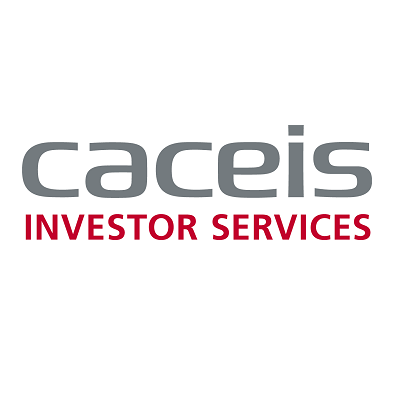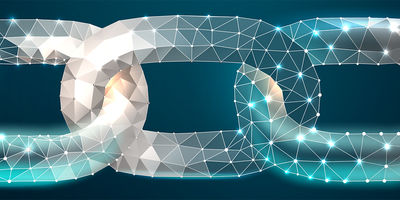Arnaud Misset, Chief Digital Officer at CACEIS and Pat Sharman, Country Managing Director, UK, hosted a roundtable on digital assets for pension schemes at the PLSA Investment Conference in June. We’ve summarised key points from the discussion below.
Digital assets and distributed digital ledger technology changes everything. It means you can manage and exchange assets globally in real time and it opens up operational efficiency from trade settlement to cash payments – today, these tasks involve verification by a central body, which can be time consuming. The decentralised nature of blockchain changes that, and will also create efficiencies in record keeping. These are some of the opportunities that will be open to UK pension schemes.
 If pension schemes don’t embrace tokenisation, it could limit their future access to investment opportunities. For example, blockchain has the potential to open up more access to private assets.
If pension schemes don’t embrace tokenisation, it could limit their future access to investment opportunities. For example, blockchain has the potential to open up more access to private assets.
And despite the fragmented regulatory landscape, when it comes to digital assets, every regulator is now focusing their efforts on this area and on decentralised ledger technology. The pace of change is accelerating.
What is blockchain and tokenisation?
In a nutshell, blockchain is an information technology protocol that facilitates the process of recording transactions and tracking assets.
Blockchain organises data in blocks. It means every transaction is logged into a block and is then validated. Once another transaction occurs, there will be another block that will be linked to the previous one. It will include some components of the previous block. Why is this important? It means every block is linked to the other and the validation mechanism makes it almost impossible to break the chain. The longer the chain is the stronger it is, which is why blockchain is considered tamper-proof. It represents a shared record of the truth, and no participant can change or tamper with the transaction.
 Tokenisation is the process of converting an underlying asset into a digital token – this means the ownership of the asset is digitalised. It’s possible to tokenise any asset. The different types of tokens can include:
Tokenisation is the process of converting an underlying asset into a digital token – this means the ownership of the asset is digitalised. It’s possible to tokenise any asset. The different types of tokens can include:
Stable coins: Cryptocurrency whose price is fixed, often pegged or tied to government-issued currency.
Securities tokens: Digital-assets for financing or investment. They represent a digital form of financial instruments or cash certificates. These should being operational efficiency to the market.
Non-fungible tokens: This is a growing area of interest in wealth management. An NFT is a cryptographic token - a digital identifier that might be linked to ownership of a piece of art or music.
Central bank digital currency (CBDC): Digital currency issued, controlled and regulated by the central bank. A CBDC has the same functions as a traditional currency.
Consensus mechanisms
A consensus mechanism is a protocol that the blockchain uses to validate the authenticity of transactions. For example, if you purchase a tokenised security and transfer it into your wallet, everyone must agree that you own that security. This forms the governance structure of the blockchain. ‘Proof of work’ and ‘proof of stake’ are the two major consensus mechanisms used to verify transactions in the blockchain. ‘Proof of stake’ is the younger of the two and uses much less energy consumption.
The importance of central bank digital currency
The emergence of central bank digital currencies is a really important step. The Bank of England, for example, is looking at the case for a central bank digital currency, as are other central banks around the world. This will drive greater adoption of blockchain. Today, there is still a difference between delivery of assets and payment. Cash is still managed traditionally in the blockchain. A central bank digital currency will change this as everything can then be managed on the blockchain.
Security
Comparisons become important when describing the concepts of digital assets. For example, in the traditional world, you need a bank account to store money. In a digital world, this is known as a wallet, where you store digital assets. A wallet is created by two things: A public key, which is the address – in the traditional world, this is equivalent to your bank account number. Second, a private key, which is the means to access your wallet. If you misplace your private key, you lose the right to access your wallet because you cannot regenerate your private key. This concept applies to all types of digital assets.
Custodians play an important role in the value chain – their role changes when it comes digital assets. It will evolve to managing the access to the asset (the private key) rather than holding the asset itself in the traditional way. That’s a really important difference to where we are today, although it is still safekeeping.
The traceable supply chain and real world examples
Blockchain and digital asset technologies to drive operational efficiencies is not something new. For example, Carrefour, the European food supermarket group, has gradually integrated blockchain technology to store information about a product, it’s origin, where it was farmed and how it was produced and where the product was sold. Today, this is giving consumers more transparency about some of the products they buy.
Other industries have experimented with blockchain. For example, in the insurance sector, AXA introduced a concept in 2017 where customers can purchase insurance that includes delayed flights – they wanted to focus on automating the claims process with smart contracts. If a flight was delayed to the point that compensation was triggered, it would automatically be paid to the customer. Everything was logged on the blockchain, including details of the flight delay and the payments – there was an automated audit trail.
Blockchain and the way it is used is not something new and there are examples inside many companies that we might interact with today.
Other developments
Today, a key part missing is the secondary market, which is limiting its expansion of digital assets. However, in Europe, we are seeing significant steps forward with the development of the European Union DLT Pilot Regime, which will lead to a trading facility, so tokenised fund shares can be bought and sold in the secondary market.
We are also seeing the emergence of tokenised bonds, which have advantages through accessibility and liquidity, with potentially lower fees and quicker settlement times. It’s still early days, but the impetus is already there.
Practical considerations also need to be embedded into the tokenisation of financial instruments, such as the ability to facilitate corporate actions. This is likely to be in the form of ‘smart contracts’ – programmes stored in the blockchain that run when predetermined conditions are met.
Building awareness
The pensions industry will have to grapple with the introduction of blockchain technology over the coming years. It’s clear that the speed at which digital assets develop will largely be in the hands of regulators and the creation of central bank digital currencies – and developments in this area are making quick progress.
Staying in front of developments in digital assets will positon pension schemes and trustees well when the time comes to leverage the opportunities and benefits of blockchain and tokenisation.




